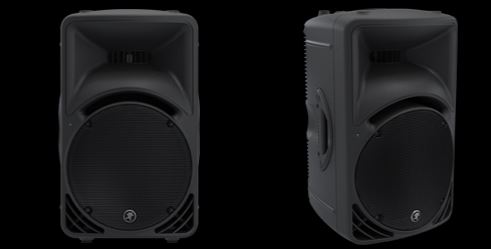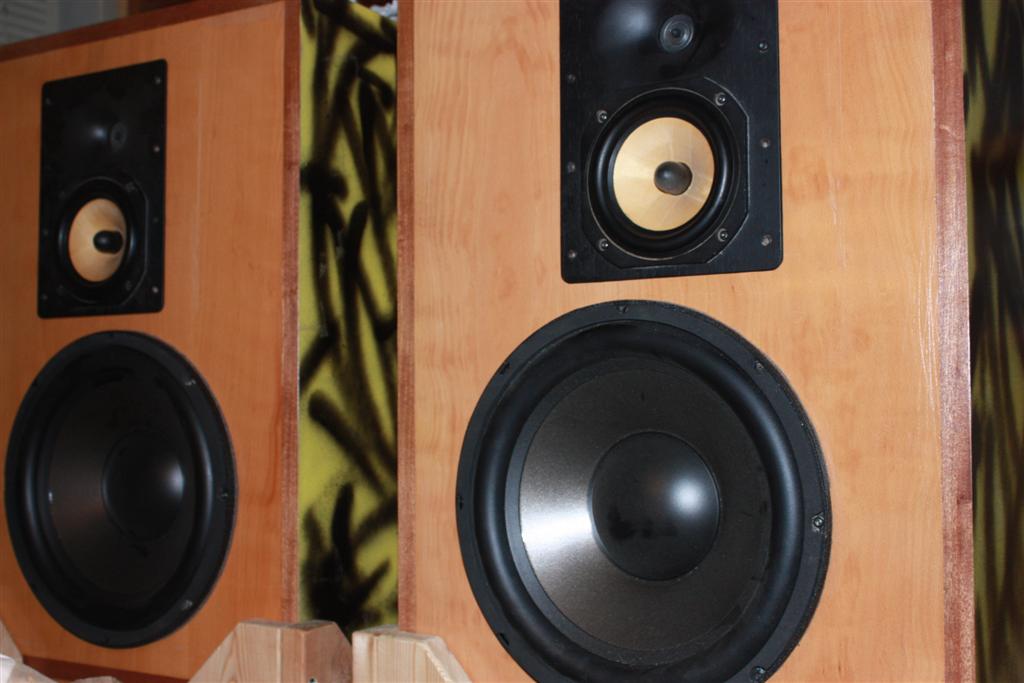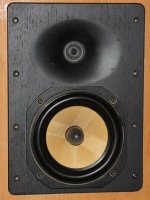not to appear contentious but i think James Bullough Lansing's original target market was audiophiles. even Altec's goal was better fidelity for theater patrons, efficiency was without doubt a factor but the premise that volume trumped fidelity even in the PA market is "fidelity profiling" that shouldn't exist.
If by 'fidelity' you mean high speech intelligibility in large spaces while firing through a perforated screen at high efficiency, then yes that was JBL's and Altec's goal, to correct the shortcomings of the W.E. system, though later on they marketed hand crafted high end 'Salon' speakers using their small cinema components for the discerning few:
LANSING MANUFACTURING
http://www.audioheritage.org/images/altec/photos/facilities/mckinley/products.jpg
http://www.audioheritage.org/images/altec/extracts/605cabinet.jpg
GM
Last edited:
well if that's a semantic faux pas GM i apologize.
is speech intelligibility not made better by a higher degree/level of fidelity?
is speech intelligibility not made better by a higher degree/level of fidelity?
Not significantly, if what you mean by "higher . . . fidelity" is harmonic distortion reduced below 1-2% or bandwidth wider than 200-5000 Hz. Lower distortion and wider bandwidth don't hurt (and may make the voice sound more "natural"), but they don't help intelligibility.is speech intelligibility not made better by a higher degree/level of fidelity?
Absolutely , you can eq the crap out of something etc. but I almost will guarantee that your compression style speakers put up against a similarly flat and radiating speaker like my B&W 801's, yours will smoke the B&w 801's completely. The cave girls bent seductively over at the watering hole will hear the watchman (correct) " better flee now!" not " better pee now" That is a test I would love the Canadians (or even near Canadians (-:..) to perform on a large scale with a random cross section of the populace. That particular test, if it came out the way I believe it will, would sell a *lot* of speakers and unsell a lot more.Decidedly non-fidelity can improve intelligibility.
ok yes sorry speech intelligibility is not congruent to fidelity (i remind myself that telephone communication would not be possible if fidelity was required for intelligibility)
Last edited:
ok this side bar got started when it was mentioned that "compression drivers and horns where not considered audiophile until recently" and i countered with the contention that i don't think the original designers choose efficiency over fidelity which is now confounded with "intelligibility"
Because Canadians are simply audio gods! The best people the best research lately some of the best chambers. I am from Mississippi and I could care less about political correctness. I call what I see and I see a crapload of people even laymen there who are spending the cold weather in front of speakers, as did I while living in Montana. Funny how you get better at the things you do due to weather. OOOh is saying it's cold a bad thing? sorry.oh and why is nationality even coming into the conversation?
Uh, can you qualify "just a few years ago"?Since prior to just a few years ago no one considered a horn as a viable audiophile loudspeaker...
Well, back in the 60's we generally called them "honkers". Of course I had a friend with an A-7, and knew someone with a Klipschorn as well . . . neither of them "honked". But along came "stereo", and hardly anyone had the space for two of them.Uh, can you qualify "just a few years ago"?
Otherwise horns for home use mostly tried to get too much out of too small a box, and all they had was "loud" and "punchy". It's a reputation that's hard to shake. "Modern" small horns are a lot better . . . but they're pretty much all direct radiators below 1000 Hz. Still don't see many "full range" horns out there . . . and few of those would qualify as "hi fi".
I think this may be a North American point of view.
Quite a few people in Europe and Asia - especially Japan - have been using and working on Hi-Fi horn designs for decades. Maybe the idea worked its way west "a few" years ago. On the time line of modern high fidelity, (starting in the mid 50s) I learned about horn based high fidelity about half way along the line. And I thought I was late to the party.
Quite a few people in Europe and Asia - especially Japan - have been using and working on Hi-Fi horn designs for decades. Maybe the idea worked its way west "a few" years ago. On the time line of modern high fidelity, (starting in the mid 50s) I learned about horn based high fidelity about half way along the line. And I thought I was late to the party.
Sort of thing that gets horns a bad rep is the typical ear-piercing compact active plastic Disco speaker up on a tripod, who's main strength is it fits in a small van.

Here's some thumbs of a nice three way design by our late moderator tinitus, aka Lars Dyreborg:


http://www.diyaudio.com/forums/multi-way/147632-classic-monitor-designs-11.html
For reasons I don't understand, Lars put a considerable ca. 10dB downward slope on the frequency response when tuning by ear. The ring-radiator Vifa XT-19 waveguide is elliptical cross-section which might average out half-wavelength artefacts. But what strikes me is how like one of Earl's designs the mid/treble is. Does it just need some foam? 🙂

Here's some thumbs of a nice three way design by our late moderator tinitus, aka Lars Dyreborg:


http://www.diyaudio.com/forums/multi-way/147632-classic-monitor-designs-11.html
For reasons I don't understand, Lars put a considerable ca. 10dB downward slope on the frequency response when tuning by ear. The ring-radiator Vifa XT-19 waveguide is elliptical cross-section which might average out half-wavelength artefacts. But what strikes me is how like one of Earl's designs the mid/treble is. Does it just need some foam? 🙂
Attachments
bad rep's are hard to live down and clinging to beliefs perpetuates stereotypes that are unfounded and unjustified.
powered speakers like the SRM 450's are maligned and abused but in the hands of a competent user can sound really good.
it's like blaming cars for what bad drivers do with them.
it's like blaming cars for what bad drivers do with them.
back to horns not being considered audiophile,is Klipsch not considered audiophile? seems to me he was making good use of horns back in the 70's and not just for bass
Uh, can you qualify "just a few years ago"?
Yea, "few" is probably not the right word. Maybe "dozens". Back in the 80's horns were all but nonexistent in audio shows. Still not very common.
i had a bad nightmare last night.
i was being forced to design a horn using a "beats pill" as a driver!
and evil little gnomes kept shouting "it's all about the bluetooth connectivity"
i gotta stop losing sleep over horns...
i was being forced to design a horn using a "beats pill" as a driver!
and evil little gnomes kept shouting "it's all about the bluetooth connectivity"
i gotta stop losing sleep over horns...
Yea, "few" is probably not the right word. Maybe "dozens". Back in the 80's horns were all but nonexistent in audio shows. Still not very common.
I'm in my 50's and grew up with horns, altec 311 w 288 and two 515's a channel. This was the 60's .. There were plenty of horn audiophiles around before the 80's. The people that didn't fall for the "high end" fluff mostly
What do you consider the radiation of the Summa speaker 60 degrees (as compared to other horn rating such as 90 by 40)
The Summa is about 90 degrees, axi-symmetric.
There have always been horn lovers, but I just recall the number of people who believed that horns could never be "Hi-Fi" - Sigfried Linkwitz for one.
There have always been horn lovers, but I just recall the number of people who believed that horns could never be "Hi-Fi" - Sigfried Linkwitz for one.
- Status
- Not open for further replies.
- Home
- Loudspeakers
- Multi-Way
- Audibility of distortion in horns!
